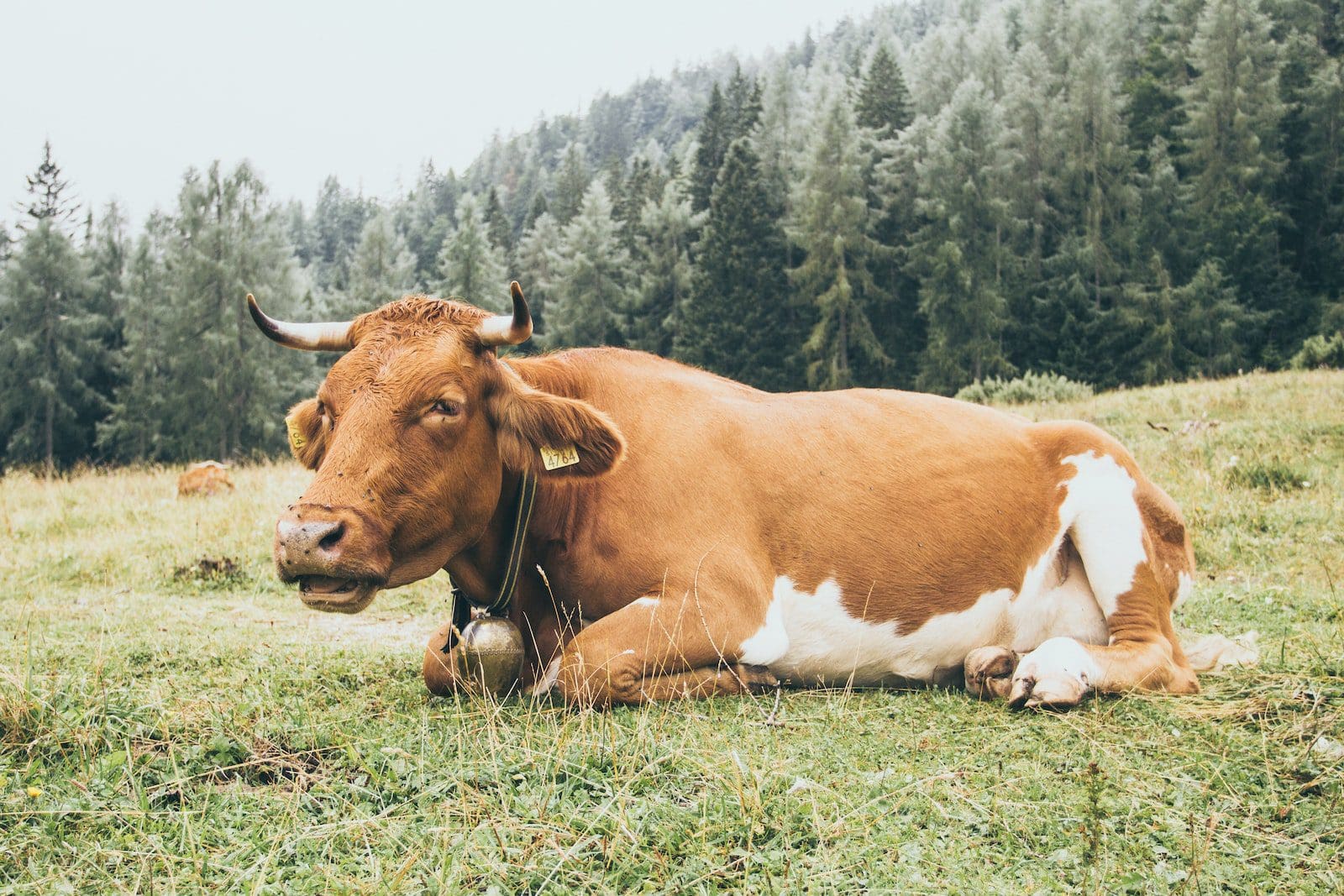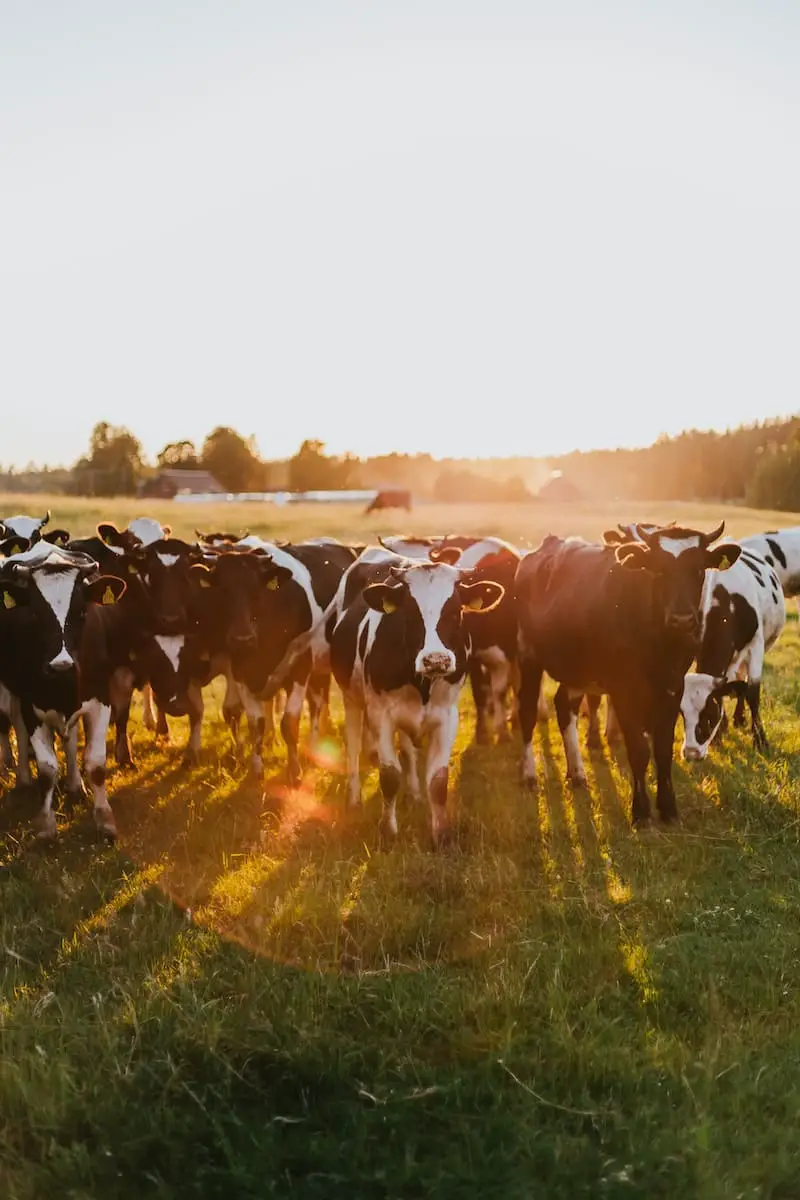Both cows and cattle are animals. The distinction between cow and cattle is very sleek, almost razor-thin. Many may, therefore, confuse them with one another.
However, the terms cows and cattle must not be used interchangeably. This is because, despite their similarities, there are some very distinct points of distinction between these two terms.
Key Takeaways
- Cows are female cattle that have given birth to at least one calf, while cattle is a term for all domesticated bovines.
- Cattle serve various purposes, including dairy production, meat production, and as draft animals.
- Cows specifically provide milk and serve as the source of dairy products.
Cow vs Cattle
Cow specifically refers to a female adult bovine that has given birth to one or more calves. This term refers to female bovines regardless of their age, breed, or size. Cattle are domesticated bovines raised for meat, milk, or other products and can be male or female of any age or breed.

Cows were first domesticated in South-East Turkey numerous years ago. As we recognize them nowadays, cows are descended from ferocious oxen, sometimes called aurochs.
Even though there are lots of different varieties of cows, dairy cows are the most well-known. Dairy cows are cows that can produce milk, which is something that not all varieties of cows can do.
They are herbivorous mammals, which suggests they eat grass, leaves, and vegetables.
Cattle are huge cloven-hoofed animals that have been tamed. They are the most prevalent species of the genus Bos and a major contemporary species of the subfamily Bovinae.
They are known as cows (female) or bulls (male) based on their gender (male).
Cattle are reared as livestock for meat (beef or veal; see meat animals), dairy (see dairy cattle), and skins for leather processing.
Comparison Table
| Parameters of Comparison | Cow | Cattle |
|---|---|---|
| Singular or Plural | It is singular. | It is the plural of a wide range irrespective of sex. |
| Gender | It is an adult female bovine who is capable of giving birth to a calf. | It includes both cows and bulls that is both males and females. |
| Farms | There is nothing called a cow farm. Cows are either domesticated as house cows or are reared as cattle. | Unlike cows, cattle have cattle farms. |
| Off-spring production | All members falling under this category can give birth to off-springs or calves. | Not all members falling under this category can give birth to off-springs as there are also male cows or bulls included here. |
| General Point | All cows are cattle. | All cattle are not cows. |
What is Cow?
Cows were first domesticated in South-East Turkey numerous years ago. As we recognize them nowadays, cows are descended from ferocious oxen, sometimes called aurochs.
Even though there are lots of different varieties of cows, dairy cows are the most well-known. Dairy cows are cows that can produce milk, which is something that not all varieties of cows can do.
They are herbivorous mammals, which suggests they eat grass, leaves, and vegetables.
A cow is just a female animal.
Nevertheless, not every cow is a cow; only female bovine cows who have delivered a baby are referred to as cows, whereas female cows that have not yet delivered a baby are referred to as heifers.
The calf is a juvenile female or male bovine mammal.
A mature male cow is referred to as a bull, whereas a young male cow is referred to as a bull calf.
The most indispensable advantage of cows is that they provide humans with dairy. Cows have become a crucial supply of milk for mankind, and it’s difficult to fathom our life without them.
Cow urine and dung are two unanticipated advantages that cows produce. Cow dung is used for a variety of purposes, including fertilizer, fuel and biogas production, and bug repellent.
On the other hand, cow urine can be utilized as a fertilizer, antibacterial, and washing agent and has some medicinal properties.

What is Cattle?
Cattle are huge cloven-hoofed animals that have been tamed. They are the most prevalent species of the genus Bos and a major contemporary species of the subfamily Bovinae.
They are known as cows (female) or bulls (male) based on their gender (male). Cattle are reared as livestock for meat (beef or veal; see meat animals), dairy (see dairy cattle), and skins for leather processing.
Cattle are plant-eating tamed animals belonging to the Bovidae family and the genus Bos.
Cattle breeds belonging to the Bos Indicus family originated in Southwest Asia, while those belonging to the Bos Taurus family originated in Europe.
Breeds of Bos Indicus have adjusted to a tropical habitat and are considered to be tolerant of hot and humid summers.
They’ve also developed resistance to insects and are frequently used as drought and riding creatures in tropical areas.
Although they can produce meat and milk, the calf consumes the majority of the dairy.
Bos Taurus cow breeds comprise the most recent meat and milk cattle, and they are now found all over the world.
The majority of cow breeds belonging to the Bos Taurus genus are adapted to colder regions.
Unlike cows, cattle have cattle farms. However, cattle do not have a specific identity of their own, and hence as a whole, cattle are not worshipped.

Main Differences Between Cow and Cattle
- A cow is singular, while Cattle is plural of a wide range irrespective of sex.
- A cow is an adult female bovine who is capable of giving birth to a calf, whereas cattle include both cows and bulls, which are both males and females.
- There is nothing called a cow farm. Cows are either domesticated as house cows or are reared as cattle. However, unlike cows, cattle have cattle farms.
- All members falling under the category of cows can give birth to off-springs or calves. On the other hand, not all members falling under this category of cattle can give birth to off-springs as there are also male cows or bulls included here.
- All cows are cattle, but all cattle are not cows.





